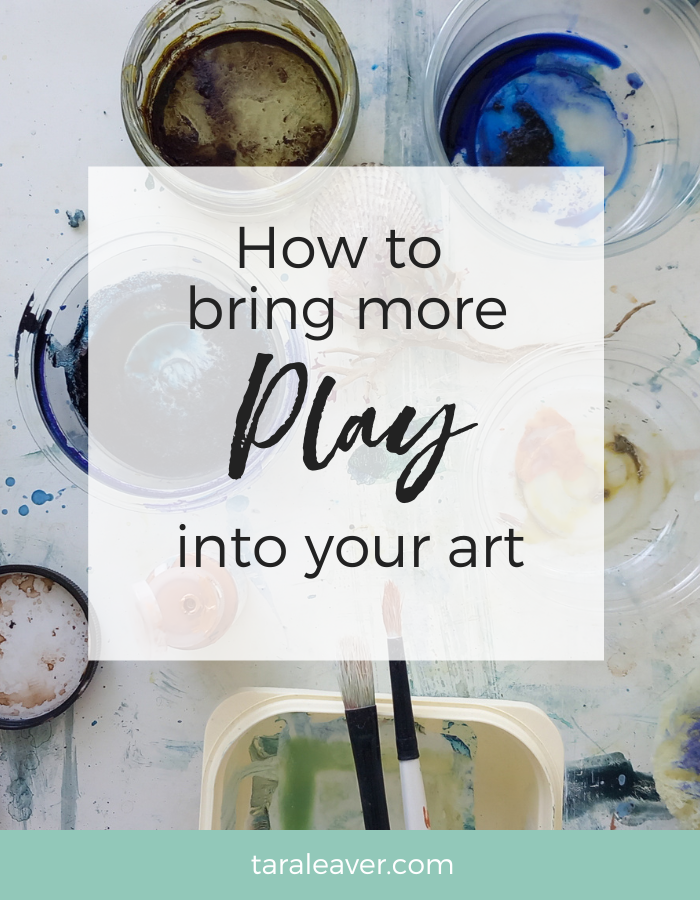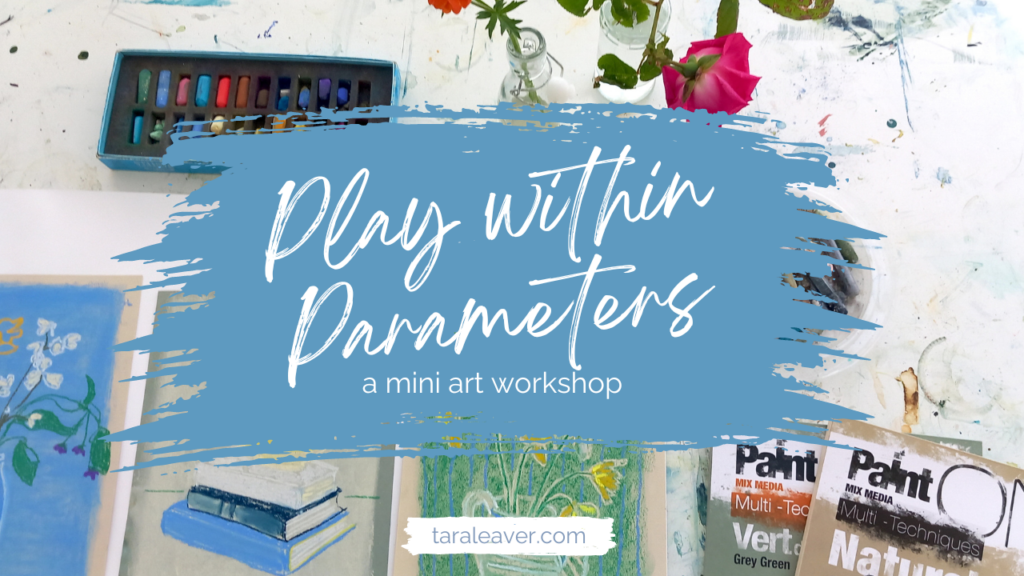
When I first got my art back, pretty much all I did was play.
I wasn’t thinking about consistency, or my ‘style’, or where any of it was going.
I just jumped in and tried all the things, and I loved it.
One of the inevitable side effects of sustaining an art practice over time {16 years in my case, at time of writing}, is that you start to strengthen your skills and develop your own visual language.
Your artist voice becomes clearer to you and more apparent to others.
Maybe you start to sell your work, online or through galleries, like me, or via any number of other avenues.
And with all that development and honing – and especially if you’re selling – comes expectation.
There’s an expectation – real or imagined – of consistency; of making work that’s recognisably yours, that you can continue to create in that aesthetic and quality.
There are pros and cons to every stage of the artist path, of course.
Where at the beginning it’s all carefree play, it can feel frustrating to feel ‘all over the place’, or like you ‘should’ at some point be fitting yourself into a recognised box with your art.
And where later on you may get to see your work in public places or the homes of collectors around the world, it can feel harder to access that playful attitude and approach you had in the early days.
I think all creativity is based in play and experimentation; it just doesn’t always feel playful. 😉
Especially if we have deadlines or are even in a happy groove with what we’re making; we can still get into ruts.
Sometimes bringing back the play is something we need to make a conscious choice to do, and it can be helpful to have some guidelines so we’re not just sitting there in front of a blank canvas or piece of paper thinking, wait, how do I play again?!
After all, children – those masters of play – use all sorts of ‘rules’ in their games, even the ones that look like total chaos!
Here are three ways you can bring more play into your art.
One | Try something different
That might be a shift in subject, or diving into a completely different medium altogether.
If you usually paint in oils, why not detour into some playful Inktense block drawings {just add water for extra fun}.
If you normally work small, try a big canvas and see what happens. Or vice versa!
Two | Make up some arbitrary ‘rules’
‘Just play’ can feel a bit vague.
But it’s your playtime, so you get to make {and break!} whatever rules you like.
You could decide to only work in monochrome, or to tear up an old painting and make something new with it.
The point is to have a container within which you can explore without pressure to create any specific outcome.
It’s all about the process.
Three | Get the Play within Parameters workshop!
Originally created for members of the Happy Artist Studio, this bitesized workshop gives you both permission and ideas to bring more play into your art.
I’ll show you how I set parameters so I don’t feel stifled but still have a springboard to bounce off, and talk you through my process in real time.
It’s super simple, and sometimes that’s exactly what we need.
Play isn’t supposed to be complicated – unless we want that of course. If that feels fun to you that is also an option. 😉
Click here or the image below to get the Play within Parameters workshop – it’s just $9 and will give you the boost you need to zhuzh things up and bring more play {back} into your art.







